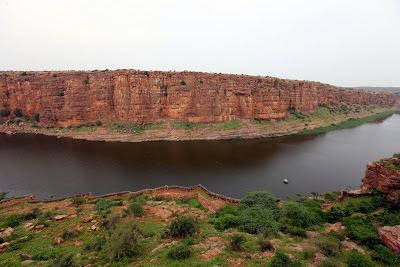Bylakuppe is home to two of the many Tibetan settlements in India, established by Lugsum Samdupling (in 1961) and Dickyi Larsoe (in 1969). Today an estimated 20,000 Tibetans live in the settlements, which were established on land leased by the state government to accommodate some of the Tibetan expatriates who came to resettle in India after 1959.
This how our travel usually happens: 1. Google the destination. 2. Select a resort 3. Book your room 4. Zip drive through expressway. 5. Spend the weekend – swimming, drinking, sightseeing, indoor gaming, and exploring the facilities. 6. Swipe your card 7. Head back and log in to work next morning.
Not that it always turns out that way but it most often it ends up like that. And no offence to those leisurely luxurious visits or any of my precious votes to adventurous treks and camping.
I did not head out to Bylakuppe for a recreational visit neither was it my first, in fact fourth. And, my first official shoot for the Nat Geo Traveller magazine. I obliged the commoners by Googling up and driving out to my destination, but only in pursuit.
The story brief was simple – documenting convergence of two cultures. It was interesting only till then. As I begun to explore the brief into bits and pieces, my curiosity killed the interesting angle. The thought of a ‘what-if’ so intense has perhaps become so common that it doesn’t stir us from within. Often hearing stories of basic definition of life the discussion takes an abrupt stop at survival.
Tibet has, from so long been fighting, not just for survival, for identity, for fairness and for acknowledgement. There are so many who have created Bylakuppe a home away from home, unsure if they would now survive in their real home after having lived here all their lives. It’s culture, climate, people, homes, nothing has been seen what the real deal is back home. Yet, a monk builds it’s home in the same way everywhere believing that there won’t be a some day I’ll go back home.
Away from the pulsating cities and towns, Bylakuppe not only gives you your own space but it gives the time to open and deal with things that I am so often in a hurry to close and move on. There is so much silence that it almost screams back when there is noise, to respect it, experience it and recreate it.
 |
| Namdroling Monastery |
At Bylakuppe, my heart might have gone out to the young soldiers dreaming of seeing home if ever, but my mind reached calmness and equilibrium, a realisation of how much once converses in silence. It feels strange sometimes when I can't make sense of a language that a person speaks but so easily interpret everything that a pet communicates. It’s just a thought...only a thought.
 |
Tibetans don't think of they have adopted to Indian topography,
they are worried how will they adopt to a Tibetan lifestyle when they go back.
The important thing is WHEN and not IF. |







































